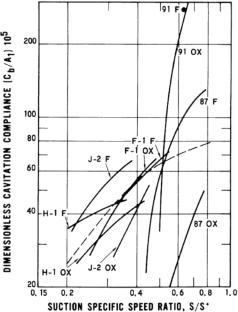One of the important challenges to be addressed during development of a new liquid rocket stage for a launch vehicle is the suppression of pogo. Pogo is a harmful dynamic phenomenon arising from the interaction of vehicle structural axial modes with propulsion fluid system modes. The vehicle structural axial mode frequency generally increases during the course of the stage operation. The likelihood of experiencing pogo phenomenon increases when the vehicle structural axial mode frequency crosses the propulsion system frequency during the flight time. To avoid this harmful effect generally a pogo suppression device (PSD) is installed in feedlines which helps to decouple these two frequencies by lowering the propulsion system frequency to a safe value which is called the targeted design frequency. The propulsion system frequency is lowered by providing the required compliance at the pump inlet. The present work describes the design of a gas filled bellow PSD for a semi-cryogenic stage of ISRO’s new launch vehicle. A gas filled bellow PSD utilizes the stiffness of the bellows and the pneumatic stiffness offered by the compressed gas in the bellows cavity to provide the required system compliance. In general, a PSD is positioned at the pump inlet. Bellows get compressed when the pump inlet pressure increases and undergoes expansion when the pump inlet pressure reduces. One of the challenges in designing a gas filled bellow PSD is achieving the system compliance maintaining bellow deflection within permissible limits and at the same time achieving the targeted design propulsion frequency. Since the stiffness of gas is a function of its pressure and volume at a particular instant, the system is a variable stiffness system which brings in further challenges in designing the pogo corrector. The system is to be designed considering the variation in pump inlet pressure, thermodynamic process the gas undergoes, the instantaneous volume and pressure of the gas and various bounds for each of these parameters. This paper illustrates how the inputs, system requirement and constraints are formulated mathematically so that the entire design is transformed into an optimization problem with envelope of the system as the minimization function. The choice of gas and initial gas pressure and volume to be maintained are also discussed. Finally, the performance of the pogo corrector under various thermal conditions is also looked into.


